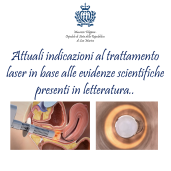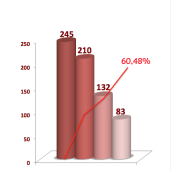We use cookies, including third-party cookies, to collect information about how visitors use our website. The personal data we collect is used to tailor advertisements. Cookies are used to provide you with an optimal browsing experience, to continuously improve our site, and, with your consent, may be used by our partners to display personalised advertising by showing you offers tailored to your interests.
By clicking on the "Accept" button, you consent to the use of all cookies, including those used to personalise advertisements according to your interests. If you close this banner or continuing with essential cookies, only technical and analytical cookies will be used for which your consent is not required. You can revoke your consent to all or some cookies at any time by clicking on the "Cookie Preferences" button, also accessible from the footer of the site.
Detailed information on the use of cookies can be found in our privacy and cookie policy.
By clicking on the "Accept" button, you consent to the use of all cookies, including those used to personalise advertisements according to your interests. If you close this banner or continuing with essential cookies, only technical and analytical cookies will be used for which your consent is not required. You can revoke your consent to all or some cookies at any time by clicking on the "Cookie Preferences" button, also accessible from the footer of the site.
Detailed information on the use of cookies can be found in our privacy and cookie policy.









 The scientific evidences show that giving birth in water does not increase the number of admissions to the neonatal intensive care; it does not affect on increasing the risk of infection and increasing the need for resuscitation of the newborn.
The scientific evidences show that giving birth in water does not increase the number of admissions to the neonatal intensive care; it does not affect on increasing the risk of infection and increasing the need for resuscitation of the newborn. Yes, there are in the case in which the woman has undergone a previous cesarean section or a uterine myomectomy or suffers from diabetes, hypertension, and rupture of membranes by more than 18 hours, and fever. The water birth doesn't involve then all those situations where continuous cardiotocography monitoring is required during labor. The fetus must also be in the occipital position and must be proportionate to the measures of the mother's pelvis. In the case of premature delivery or the delivery over the term, the labor in water is not practiced as these conditions may result in emergency situations.
Yes, there are in the case in which the woman has undergone a previous cesarean section or a uterine myomectomy or suffers from diabetes, hypertension, and rupture of membranes by more than 18 hours, and fever. The water birth doesn't involve then all those situations where continuous cardiotocography monitoring is required during labor. The fetus must also be in the occipital position and must be proportionate to the measures of the mother's pelvis. In the case of premature delivery or the delivery over the term, the labor in water is not practiced as these conditions may result in emergency situations.


















































